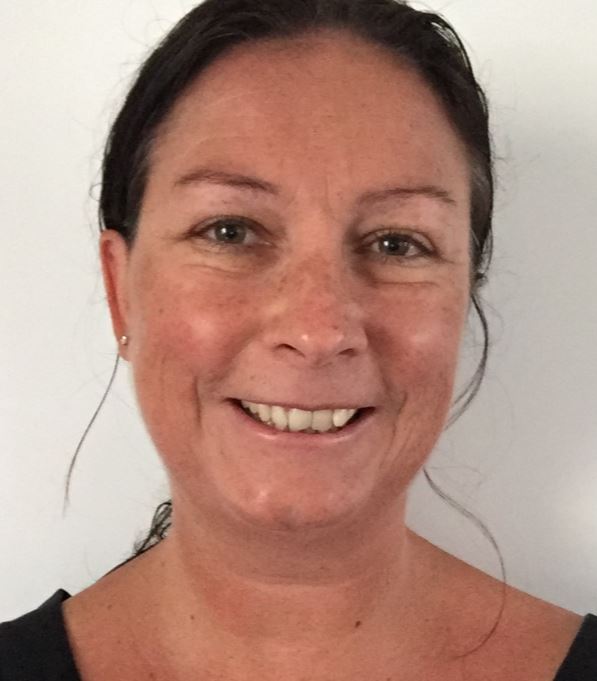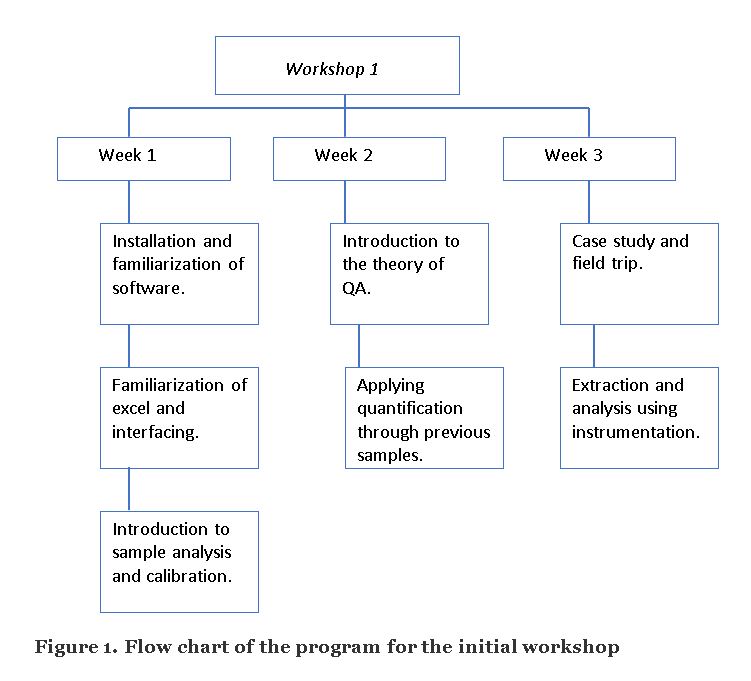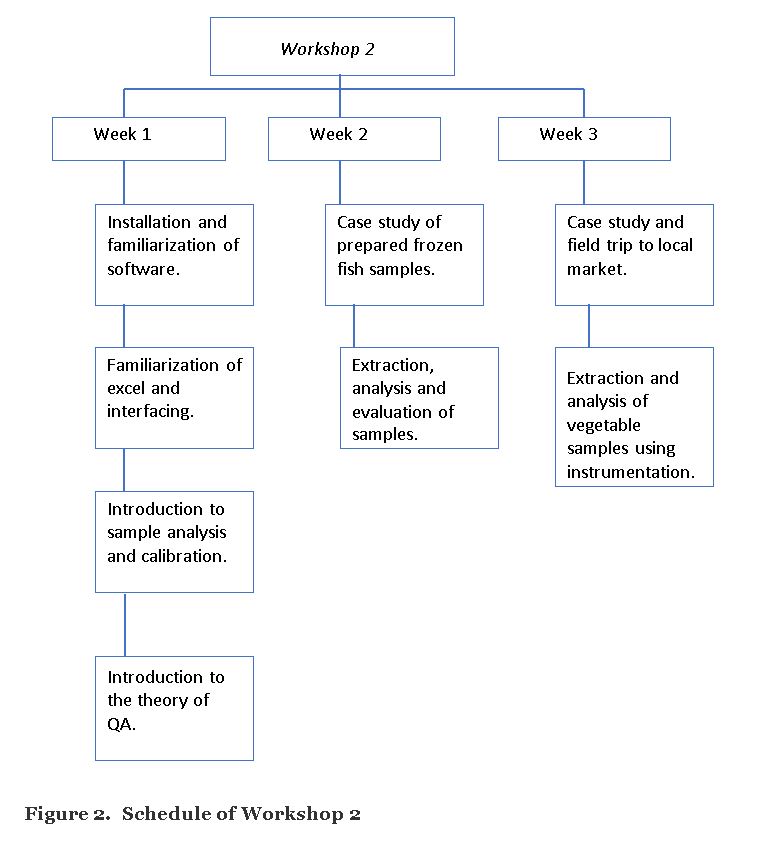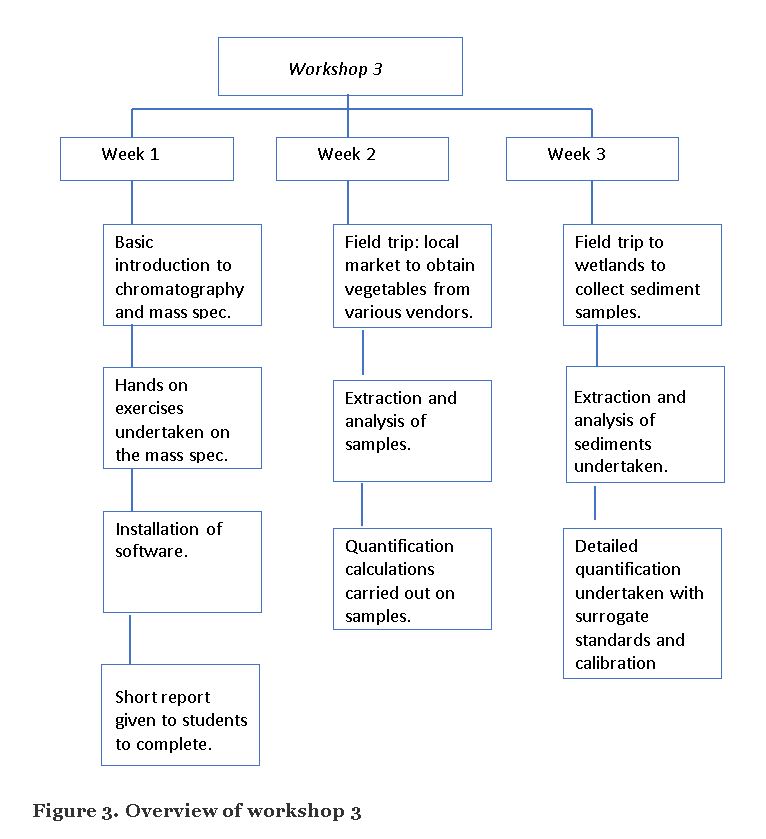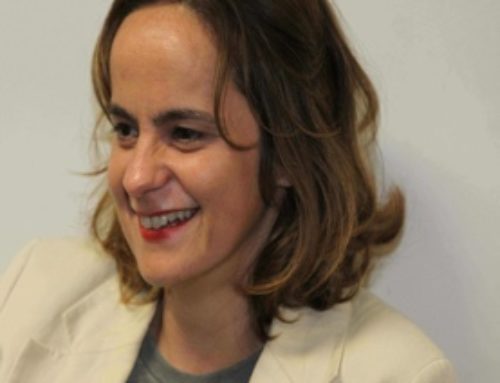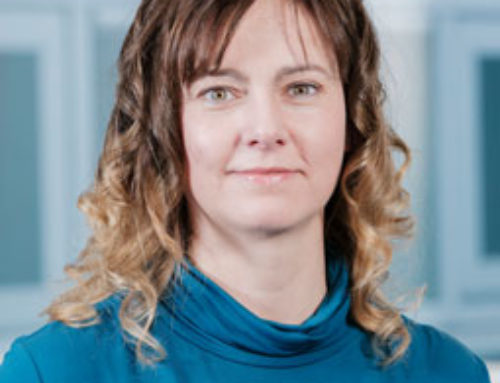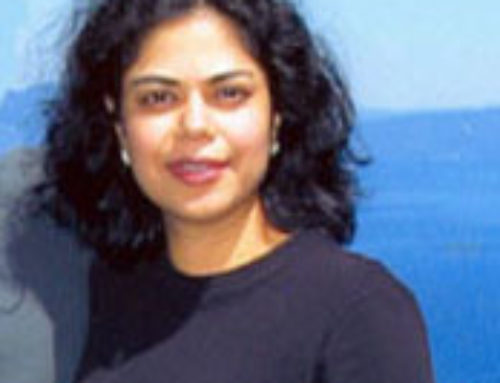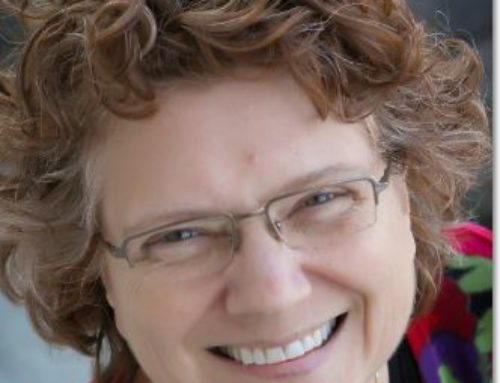HETL Note:
In this academic article, Dr Zoë Griffiths, Ulla Eriksson, and Michael Strandell discuss how they designed an international training workshop with the aim of improving the chemical analysis capabilities in certain Asian developing countries. The authors explain how active and open learning strategies and techniques were used to engage workshop participants in quality assurance training in chemical analysis.
Author Bios:
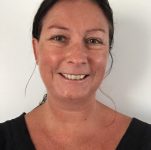 Dr. Zoë Griffiths undertook a Bachelor of Science (CHEM) at La Trobe University, Melbourne, Victoria in 2000. She then completed her honors year graduating with 1st class honors. She then completed her PhD at La Trobe University in 2006. In 2007 Zoë undertook her post doctorate at T-U Berlin. For several years after that she worked in industry until returning back to Australia to take up a lecturing position at the University of Newcastle both in English Language and Foundation studies and the Department of Chemistry and Environmental Sciences. Zoë is passionate about access and equity for all and also works internationally with colleagues from the University of Stockholm with the International Science program (ISP) in South East Asia to enhance academic integration of those from less advantaged countries.
Dr. Zoë Griffiths undertook a Bachelor of Science (CHEM) at La Trobe University, Melbourne, Victoria in 2000. She then completed her honors year graduating with 1st class honors. She then completed her PhD at La Trobe University in 2006. In 2007 Zoë undertook her post doctorate at T-U Berlin. For several years after that she worked in industry until returning back to Australia to take up a lecturing position at the University of Newcastle both in English Language and Foundation studies and the Department of Chemistry and Environmental Sciences. Zoë is passionate about access and equity for all and also works internationally with colleagues from the University of Stockholm with the International Science program (ISP) in South East Asia to enhance academic integration of those from less advantaged countries.
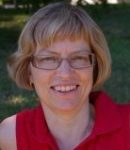 Ulla Eriksson is part of the Department of Environmental Science and Analytical Chemistry of Stockholm University. Her research interests include; to analyse and develop methods for organic contaminants. Monitor organic pollutants such as PCB, DDT, HCB, HCH and brominated compounds in biota. Analytical techniques: GC/ECD, GC/FID and GC/MS, LC and PFE. Ulla is also heavily involved in quality assurance work. Ulla is a trainer and adviser of staff and students in above instrumentation and analytical methods within the International Science Program that educates students and staff from low socio-economic countries in South East Asia.
Ulla Eriksson is part of the Department of Environmental Science and Analytical Chemistry of Stockholm University. Her research interests include; to analyse and develop methods for organic contaminants. Monitor organic pollutants such as PCB, DDT, HCB, HCH and brominated compounds in biota. Analytical techniques: GC/ECD, GC/FID and GC/MS, LC and PFE. Ulla is also heavily involved in quality assurance work. Ulla is a trainer and adviser of staff and students in above instrumentation and analytical methods within the International Science Program that educates students and staff from low socio-economic countries in South East Asia.
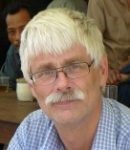 Michael Strandell is part of the technical team at the Department of Environmental Science and Analytical Chemistry of Stockholm University. Michael is involved in the installation, service and maintenance of GC, GC/MS, HPLC and IT. Arrange and facilitate donations of above analytical instruments to the developing world. Michael is a trainer and adviser of staff and students in above instrumentation and analytical methods at the following universities and organizations: Faculty of Chemistry, University of Latvia, 1998-2004; Royal University of Phnom Penh, 2005-present; Royal University of Agriculture, Phnom Penh, Cambodia, 2005-2006; Cambodian Import and Export control (Camcontrol); Phnom Penh, 2006-present; Chemistry Department, National University of Laos, Vientiane, Laos PDR, 2008-present; Dept. of Chemistry, Dacca University, Bangladesh 2007-present; Dept. of Chemistry, Chancellor College, Zomba, Malawi, 2007;Dept. of Chemistry, Addis Ababa University, Addis Ababa, Ethiopia 2009-present; Dept. of Chemistry, School of Physical Sciences, Univ. of Nairobi, Kenya 2011-present. He received a National Medal Award from the Cambodian government in February 2013.
Michael Strandell is part of the technical team at the Department of Environmental Science and Analytical Chemistry of Stockholm University. Michael is involved in the installation, service and maintenance of GC, GC/MS, HPLC and IT. Arrange and facilitate donations of above analytical instruments to the developing world. Michael is a trainer and adviser of staff and students in above instrumentation and analytical methods at the following universities and organizations: Faculty of Chemistry, University of Latvia, 1998-2004; Royal University of Phnom Penh, 2005-present; Royal University of Agriculture, Phnom Penh, Cambodia, 2005-2006; Cambodian Import and Export control (Camcontrol); Phnom Penh, 2006-present; Chemistry Department, National University of Laos, Vientiane, Laos PDR, 2008-present; Dept. of Chemistry, Dacca University, Bangladesh 2007-present; Dept. of Chemistry, Chancellor College, Zomba, Malawi, 2007;Dept. of Chemistry, Addis Ababa University, Addis Ababa, Ethiopia 2009-present; Dept. of Chemistry, School of Physical Sciences, Univ. of Nairobi, Kenya 2011-present. He received a National Medal Award from the Cambodian government in February 2013.
Enabling and engaging students through open learning workshops
Zoë Griffiths
University of Newcastle, NSW, Australia
Ulla Eriksson & Michael Strandell
University of Stockholm, Sweden
Abstract
Over the past three years the International Science Programme (ISP) have funded a training workshop at the Royal University of Phnom Penh (RUPP) which encompasses students and staff from RUPP, The National University of Laos and Dhaka University, Bangladesh. This course was designed to respond to the need for improving the quality of chemical analysis in developing countries in the Asian Network of Research on Food and Environment Contaminants (ANFEC). The workshop provides training, experimental and theoretical for quality assurance in sampling and analysis using gas chromatography mass spectrometry (GCMS) through open learning. Practice development and active learning were implemented within this workshop to enable and engage the students in becoming confident researchers and learners. This paper summarizes the best practices found and discusses enabling conditions which best suits students from non-English speaking backgrounds and low socio-economic backgrounds.
Keywords: Active learning, field trip, practice development, open learning, practical techniques, foundation studies, higher order skills
Introduction
In 1961 Uppsala University established the International Science Programme (ISP), which promotes and strengthens postgraduate research in low-income countries in the fields of chemistry, physics and mathematics. In 2011, a joint agreement was signed between Uppsala University and RUPP in an attempt to facilitate academic research and educational co-operation between the two institutions.
Three South East Asian countries (Cambodia, Laos and Bangladesh) became involved within this agreement through the implementation of active workshops. All three of these countries are low socio-economic either recovering from decades of civil war or undergoing political turmoil. These factors have engendered huge shortfalls in teacher supply and low teacher quality in many developing countries. Education serves as the backbone in development process. Open learning and distance education programs are serving as pivotal part of development process, Mehmood, Hussain and Saeed (2006). The objective of the ISP funding is to increase the capacity of research at each of the Universities.
Open and distance learning (ODL) programmes are becoming one of the most practical ways that universities across the world are increasingly adopting in order to increase access to university education (Chawinga and Zozie 2016). ISP has designed a workshop to respond to the need for improving the quality of chemical analysis in developing countries in the Asian Network of Research on Food and Environment Contaminants (ANFEC).
Over the course of several years the ISP have funded three active workshops in Phnom Penh, Cambodia with the objective to develop participants’ skills in quality assurance and chemical analysis. These workshops enable and engage students in Quality Assurance (QA). The methods taught range from the initial stages of sampling to the final stages of undertaking an extraction, methodology and finally quantitation and qualitative analysis.
The workshop provides training, experimental and theoretical for quality assurance in sampling and analysis using gas chromatography mass spectrometry (GCMS) through open learning. Practice development and active learning were implemented within this workshop to enable and engage the students in becoming confident researchers and learners.
The large majority of students throughout the world today are not afforded the benefits of such courses. Article 13 of the United Nations (1966) stipulates “higher education shall be made equally accessible to all, on the basis of capacity, by every appropriate means, in particular by the progressive introduction of free education” (p.6). However, in many developing countries such as those in Cambodia and Laos are still struggling to offer higher education to deserving students that cannot afford higher education. Studies have shown that inequalities of access to higher education still exist around the world (Badat, 2004; Bekhradnia, 2004; Brennan, 2004; Smith & Casserly, 2006).
The ISP has given opportunity to students from the low socio-economic countries in South East Asia. This project was designed as an active workshop for students within the science faculty using field trips, practical skills and theory to engage the students within the learning environment. It is hoped that the students who undertake this course will be able to build on the foundations of learning to research and have their interests encouraged and be further equipped to teach others. The other aim is to arm students with the skills and practices to enhance their skills of employment. It is essential to possess such skills in low socio-economic climates such as the South East Asia region. Such skills include retrieval and handling of information, planning, problem solving, communication and social interaction.
Literature Review
Implementing field trips
The workshops integrated within this study utilize field trips as a teaching strategy. Some of these strategies employed by the instructors included lecturing, group learning, blended learning, online learning and self-directed learning to quire meaningful learning experiences. Unfortunately, lecturing can have limitations that hinder optimum learning. One such limitation is that it can be one-way and students may not be engaged (Kolikant, Drane & Calkins, 2010). This type of one way learning can be especially difficult given the added limitation of having English as the second language and barriers between languages can occur.
Given those limitations, it was vital to identify additional teaching strategies that could be employed to enhance the learning experience. Once such teaching strategy is the inclusion of a field trip (Kisiel,2006). A field trip can be defined as visiting a place that gives students the chance to study something in a real environment, rather than in a classroom or laboratory. This teaching strategy essentially enables the classroom to be extended to the field (Lei, 2010; Couglin, 2010), and can be effective when carefully planned and structured (Chan & Brown, 2011; Nabors, Edwards, and Murray, 2009; Kisiel, 2006), creating a framework where learning can occur in both expected and unexpected ways.
The field trip enables the instructor to solidify learning by enabling students to directly experience course content and concepts (Lei, 2011). This is especially useful to implement within this study as the students all have English as a second language and a lack of exposure to higher level learning when compared to the Western world. As explained by Couglin (2010, p. 200) “field trips are lived learning. Students actively learn through the Weld experience and the interaction generated among the students as well as between teachers and students.”
Studies have shown that there is a significant correlation between engaging students in field trips and the gain in the attitudes of students towards science (Ignatiuk 1978). Dewitt and Storksdieck (2008) explain that evidence from various research studies that conclude field trips are beneficial learning experiences. There have been many subsequent findings advocating field trips in the sciences. Thompson (1982) outlines the purpose of fieldwork and suggests that there are four objectives that students should be able to do at the end of the fieldwork that they could not complete at the beginning. The four objectives are listed as follows: (i) intellectual skills and abilities, (ii) practical skills and abilities, (iii) mastering practical techniques, (iv) interests and attitudes. It is the purpose of this study that the students will also be able to master the four objectives through manipulation of the course to best suit the needs of the participants. Shepley (1986) describes how field studies are regarded as the most natural means to meeting the content aims of a course and increase the attitudes and interest in the students. These courses then ignite the interest and promote the learning and research interests of the students. Taking students out into the field gives them a greater sense of how research works and will enable the students’ to gain the practical skills required of them. It is the hope that students will be able to not only develop research skills but also implement these skills and develop original research ideas. The success of the workshops will be measured by the research skills developed and attrition rates of the students.
This ISP funded course took place over three years for a length of three weeks each. Interviews were taken from the participants who had completed the workshop and through the findings changes were implemented after the first and second workshop to ensure that the subsequent workshop catered more specifically to the needs of the students. These findings, changes and implementations will be discussed within this paper.
Principles of Active and Open Learning
Open learning enables learners to be self-determined and interest-guided which can have positive and negative connotations. Stacey (2013) discusses how educators can use open pedagogies to assist learners that are often unable identify which material is needed, useful, and required at their level. This is especially important with the students undertaking the workshops due to their backgrounds and language skills. Hence, Smyth, Bossu & Stagg, (2015) describe that the open content learning design must assimilate the material from various sources and provide a new pedagogy that is appropriate to the needs of these learners.
Practice development and active learning encompasses a wide range of activities. It is suggested that practice development is a process that develops a person’s learning enabled by facilitators (Garbett and McCormack, 2002; McCormack et al., 1999; McSherry and Warr, 2006; Page and Hammer, 2002). The definition classes that learning brings about transformations of individuals and team practices, sustained by embedding practice development processes and strategy (McCormack et al 2008 pg 9). Thus, it is expected that learning will be transferred into practice.
It is the aim of the most recent workshop that practice development will be implemented and that by the end of the workshop the students become more confident and capable in undertaking their own research planning. The findings of the previous workshop were discussed and changes were made so that a process was developed to enable the students to be able to gain the most benefit from the teachings awarded to them.
Active learning allows for in depth learning that ties and integrates various learning methods (Dewing, 2008, p78). Being open to, engaging with and drawing in personal experiences are central to ensuring transformational practice development (Dewing 2010). The central principles for active learning are classed as (Fink 1999, Dewing 2010):
- Making multiple uses of the senses, seeing, noticing, observing and reasoning and the use of multiple and/or social intelligence;
- Critical dialogue with others;
- Critical dialogue with past, present and future works and research and experience;
- Practice by doing in work related activities and doing things slightly differently in an effort to increase an understanding of research;
- Facilitating the same learning environment and experiences with others around them.
Commonly, for students to be engaged, ‘active learning’ needs to be taking place (Dewing 2010). Whilst previously it had been though that active learning incorporated all types of learning is has since been suggested that active learning needs to be of a higher order thinking such as analysis, synthesis and evaluation (Chickering and Gamson, 1987). This workshop encompasses all the above qualities and engages the students in active learning starting from basics to finally concluding the workshop with the knowledge and ability to perform analysis and interpretation.
At a higher educational level it is the aim of the facilitators to approach the field of study and practice in a particular way. The goal of this course along with others before was to have students learn to solve chemical problems and to be able to design and carry out their own research projects competently using open learning. To distinguish competent chemists one needs to be practiced in the thinking and acting of a chemist (Dall’Alba 1993). Students therefore need to be equipped with the specific skills and knowledge; to broaden and deepen their experience in the field.
Learning Outcomes
The learning outcomes that were hoped to be achieved within this workshop were expanding on the research abilities of the students and enabling the students with the skills to undertake competent quality assurance analyses. It is also hoped that students will become more adept in the operation and maintenance of the FID/MS and the GCMS that are housed in the Department of Chemistry at RUPP.
Course Design
Over the course of several years there have been three workshops, varying adjustments have been made and are outlined in Figure 1. Some adjustments were made to the workshop of January 2014 on the basis from the findings of the workshop in October 2011 but the major adjustments were made to the workshop of January 2015 and the results and feedback are discussed within. A three-year gap occurred between the workshop of 2011 and 2014 due to work commitments elsewhere for the organizers. It was difficult initially to co-ordinate the availabilities of all parties and it has since being decided that as of 2014 the workshops will run each year in the Asian summer for three weeks. It was decided that this was the best time to undertake the workshops, as there is minimal teaching within the Universities at that time. Three weeks were thought to be the best length of time to undertake the workshops incorporating field trips and QA methodology. As there is a rotating venue for the workshops being Pnomh Penh, Vientaine and Dhakka respectively each year (as of 2015) students and staff are only allowed a certain amount of time away from their Universities. This encroaches on the time constraints for the workshops and the ideal length was determined to be three weeks.
The participants involved within the workshops were fee-paying students from Cambodia who were entering into their honors year, staff and students from the University of Dhaka and staff from the Royal University of Laos. Due to the low SES backgrounds of the countries and students that are participating in the workshops, there are little funds for students to travel to other destinations for the workshops. It is for this reason that they now rotate between the three countries.
Students were taught the importance of quality assurance and validation when making scientific enquiries. The two topics that were discussed were quality assurance and quality control. The importance of maintaining good laboratory practices to obtain accurate scientific results was stressed. Quality assurance (QA) refers to planned actions necessary to provide adequate confidence that a product will satisfy given requirements for quality. Quality control (QC) refers to day-to-day operational techniques and the activities used to fulfill the requirements of quality. This course included mastering both QA and QC and students were required to perform QC measures in the laboratory and to understand the corresponding QA measures.
Schedule of the Workshop 1
The initial workshop (Figure 1) started with the first week focusing on preparing all students to be able to work with the same interface, GCMS software and Excel, were installed on all computers. Part of the first week entailed this installation, becoming familiar with the Chromatography software system and learning how to identify the compounds, use quantitation and undertaking the task of calibration. A majority of the participants were not highly skilled in computer technology and it became clear that the application of technology was a large hurdle for them.
The second week contained the introduction of the theory of QA. Students did find some of this theory difficult to follow and two the main reasons that came into light were poor training through out the degree and inadequate English skills. Many exercises were undertaken in an effort to achieve participants’ awareness of using the applications by using files from previous sample analyses as exercises in Chromatography software for the students. By the end of the week over half of the students were becoming more confident with using the software.
The third week entailed a case study in which students were taken to a local market to buy fish of six different species. The students were selected into six groups of two. Before the field trip commenced students looked at varying factors that could possibly influence or bias their results. Such examples were targeting particular vendors who were known to have their produce sourced locally and not from neighboring Vietnam. Another factor was asking the vendors where the fish were sourced along the river so each group could identify particular areas if the results showed alarming amounts of pesticides. Preparation, extraction and cleanup were undertaken in the laboratory for analyzing polychlorinated biphenyls (PCBs) and some organochlorine pesticides. Each group worked with one of the fish species, one blank sample and one control sample (brought from ASES, Stockholm University). After analysis on the GCMS the files were transferred enabled the students to work with their own sample files. This work included; quantification using a surrogate standard and calibration curves, determination of the Limit of Detection (LOD) and Limit of Quantitation (LOQ) from the Signal to Noise ratio (S/N), trueness by recovery with surrogate and volumetric standard and the use of control sample and control chart.
Schedule of the Workshop 2
For the second workshop (Figure 2) the introduction of QA theory was condensed into being completed in one week due to the decrease in the amount of prepared files. Instead two case studies were planned, one with frozen fish samples from Europe and one encompassing a field trip to analyse vegetables from Phnom Penh. The installation and introduction to Chromatography software remained the same. In condensing the theory of QA it became clear that participants found it quite difficult to follow as there were less exercises and the education background was inadequate.
During the second week the students extracted, analyzed and evaluated the fish samples from Europe in the same way as during the workshop 2011, now in groups of two to three.
The third week entailed the case study in which students were taken to a local market (Psar Darm Kor) to buy beans and lettuce from six different vendors who sourced their food locally. Again as with workshop 1 participants discussed various methods in which the samples would be chosen. It was important as the case study focused on looking at the amount of pesticides in Cambodian vegetables that only nationally sourced food was to be analysed. Vendors were asked where the food was grown and in which areas in an attempt to broaden the sample location and also make it inclusive to Cambodia. Extraction was then undertaken in the laboratory to select the samples for pesticides. This case study was more of a screening study and therefore just included a blank sample together with the vegetable samples. After GCMS analysis the students worked with their own files in Chromatography software and Excel. They performed quantification using calibration curves, including determination of the Limit of Detection (LOD) from the blank samples.
Upon reflection between the two workshops, it became clear that students were having a lot of difficulty with the language barriers and comprehension of the content. Interviews were taken from all who undertook the course and finding show that the students were struggling with the theory and computational tasks that were carried out in the first week. Whilst the experimental parts of the second and third weeks was proved a success for the understanding of the theory of QA, the theory behind the analytical part on the instrumentation was difficult for the students to comprehend. This research found that there were gaps in the students’ knowledge regarding the concepts of chromatography and mass spectrometry.
It was obvious that the case study including the experimental part in the laboratory and the following QA work with the students own chromatography files was of great benefit for the understanding of the theory of QA. It was more doubtful if the exercises with chromatography computer files of previous sample analysis contributed to the understanding or just contributed with confusion. The concentration of PCBs and organochlorine pesticides in fish was found to be low making the following quantitation unnecessary difficult.
Changes were implemented in place for the third workshop in January 2015 due to feedback from the students who undertook the 2014 workshop as made below;
‘It is difficult to understand some of the computer work and how to do it’ Daneth, RUPP.
‘I find it hard to use the computer and what we are doing’. Channa, RUPP
The schedule had changed to include basic chromatography theory within the first week, including practical work. Both case studies, now included the whole chain from sampling to evaluation of results. The theory of QA was integrated in the case studies and chromatography computer files of previous sample analysis as exercises were removed. More intimate teaching with smaller groups of two to four students was included and found to be highly beneficial.
Schedule of the Workshop 3
The first week was mainly dedicated to basic background knowledge of chromatography and mass spectrometry and more particular, gas chromatography (GC). Hands-on exercises were undertaken on different GC instruments with emphasis on all students to be involved. Installation and the introduction to Chromatography software was the same as earlier years. A flow diagram is shown in Figure 3.
Students were also required to write a report on one of the first case study that they undertook and it was discussed what would be included in the lab reports. This was of great benefit to the students as it encouraged their English and scientific writing skills. This was shown in the comments students made as shown below:
‘I found it helpful to be taught how to write a report and learn to research’ Soupea, RUPP.
‘Doing exercises together on the machine was very helpful, we are grateful to be given this opportunity’. Sopha, Royal University of Laos.
During week 2 the first case study was undertaken. The students were analyzing pesticides in spinach and bak chow from the local market Psar Darm Kor in Phnom Penh using a known screening method. This time they were working in six groups of three. Each group analyzed one of each vegetable, one blank sample and recovery samples by spiking the “real” vegetable samples with calibration standards. The students were undertook the same quantification calculations as for the vegetables in workshop 2 but this time included trueness by recovery. Discussions about EU’s maximum residue levels (MRL) for pesticides in the analyzed vegetables were undertaken.
During week three the second case study was undertaken and involved the analysis of organopesticides and possibly PCBs and polyaromatic hydrocarbons (PAH) in sediment from the wetland Boeung Cheng Ek south of Phnom Penh that receives all wastewater from the south central part of the city. A quantitative method that was already tried and tested in ASES, Stockholm University was undertaken. The sediments were taken from six sites following the flow of the wastewater. Each group worked with one sediment, one blank sample and one control sample (brought from ASES, Stockholm University). The analysis included; quantification using surrogate standards and calibration curves as well as single-point calibration, determination of the Limit of Detection (LOD) and Limit of Quantitation (LOQ) from the Signal to Noise ratio (S/N) and blank samples, trueness by recovery with surrogate and volumetric standard and the use of control sample and control chart.
The theory of QA was integrated in the case studies and since case study one was based on a screening method and case study two on a quantitative method the QA could be introduced stepwise.
Interviews were again conducted during the last week of the workshop. Some participants had completed the workshop over both years, which gave a good indication of how the differences within the courses were received, and the benefits arising from them.
Results and Discussion
It was the aim of this workshop to enable students to be confident within their area of analytical chemistry. For the students to become competent practitioners the content of the course had to be able to provide the relevant experiences and engage the students in practice. To enable this, both theoretical and practical elements in line with competent practice was to be gained during the three weeks.
In the first two workshops in 2011 and 2014 only one field trip was undertaken and there was a large focus placed on the theory of QA with rather than hands on practical experience.
Due to the differences in educational standards and facilities that students in third world countries face it became clear that language and educational barriers were complicating learning and making engagement and comprehension a more difficult task.
Feedback from the two first workshops indicated that whilst the majority of students found the more over-view parts of the QA understandable, and the field trips and experimental work in the laboratory both useful and enjoyable, confusion arose with the more complex parts of QA and the quantitative analysis especially using the software. A solution was found by using files from previously analysed samples as exemplifying exercises for the understanding of QA and by starting from the basics using enabling techniques.
Due to technical difficulties with the mass spectrometer during the workshops there was limited time for the students to experience the mechanics. It also became clear from facilitating with the students that an overestimation had occurred in regards to the knowledge that the students had of GCMS and chromatography in general. Overall, the students found it difficult to link the theory of QA, exemplifying exercises and mass spectrometry together. Difficulties between the two languages were also expressed.
It was then decided that changes were to be implemented before the third workshop in 2015 was due to take place to allow for the difficulties in comprehension and to put into place some enabling foundation techniques for the students upon commencement of the course.
Such enabling materials were more hands on activities, students been placed in smaller teaching groups when calculating and evaluating their sample files, enable more intimate teaching methods delivered. To better ensure the best possible enabling experience for the students several pre-activities were carried. Such activities involved researching and visiting the site for the sediment sampling to ensure that sampling would be effective and to establish the purpose of the site. The knowledge from the analysis of vegetables in 2014 influenced a change of extraction method as well as vegetables. The objectives of Thompson (1982) were put into place to ensure that the facilitators were training the students in the field of practicality and research.
The first week of the third workshop in 2015 entailed basic training in chromatography and mass spectrometry, which had not been discussed in detail the previous years. Students undertook initial chromatography experiments and also practiced injections on the mass spectrometer. These enabled all students to have practical experiences and findings found this also increased the confidence of the students who were more engaged and enthusiastic.
The application of the software was taught using many examples in a different style of lecture slides making them easier to follow and students also accessed some notes to undertake simple exercises that were scaffolded to more complex exercises.
Two rather than one field trip was catered for in 2015 and this proved to be a success for the students. During the second trip students were more aware of what was expected of them and also were able to master practical techniques and demonstrate practical skills and thoughts. Integrating the theory of QA with the case studies and the application of this theory by using their own sample files. Combined with the two field trips and dedicating a large amount of time in the laboratory provided a more beneficial experience for the students by undertaking the principles of active learning.
The new outline of the second workshop had more emphasis on higher order skills for research and managing life situations and implementing the objectives of active learning. These changes proved positive with students stating that workshop has taught them how to research and think for themselves and future projects. Students observed on how fortunate they were to have had this opportunity from ISP to learn through the workshop and have guidance in learning how to research for themselves.
Upon comparison with students and staff who had completed both courses there was an overall majority of favorable feedback for the third workshop. They found that having a more active workshop benefited them greatly and they could apply the knowledge they were taught within the ‘theoretical’ component of the workshop. It was shown that the four objectives that were hoped to be achieved during the workshop were maintained through the field trips and practical skills obtained during instrumentation training.
The confidence of the students over the three weeks improved markedly with students being capable of following an experimental technique and becoming proficient in making injections for experimental analysis. This is in stark contrast to the years before being heavily based on lectures focused on the QA part.
Further research
It would be proposed for future workshops that the incorporation of the active participation of students continues. It is clear from the feedback and the engagement of the students that the field trips were of great benefit and that the two field trips incorporated into the workshop remain. To initially start with the basics of chromatography and performing small experiments on the process and methodology of chromatography was of benefit and should continue.
Whilst the active participation was well received and the field trips and practical experiences were regarded as highly beneficial, they also have to be cemented by the theoretical knowledge and understanding. This does pose a problem due to the limitations of language and also of software for chromatographic systems. Several things can be incorporated into the workshop to try and bridge this gap. Some implementations would be to design workbook or sheets for the students to complete each day after the workshop in order to become more familiar with Chromatography software. Longer and more unusual scientific words continue to pose a problem for the students in understanding particular concepts when discussing analytical methods. One possible solution would be to design a glossary with the words and definitions translated into the particular languages of the students. Of course a limitation of this would be the three different languages for the three countries.
Using peer learning would also be advantageous as those students with the greater grasp on English and chemical knowledge can in turn impart this knowledge onto their peers. This would encourage engagement within the peer group and also a greater understanding of the concepts as one often gains more from teaching than the learning itself.
Conclusion
The GCMS workshop that implements active learning has shown to engage students and encourage them to think and solve real life problems. Active learning can be achieved through the skilled facilitation that enables the effective use of such teaching methods. Through the ISP facilitating these workshops it has been shown that students from low-income countries are becoming higher order thinkers, which are enabling them to start to form their own research ideas and solve real life problems relating to their country. The four objectives of intellectual skills and abilities practical skills and abilities, mastering practical techniques, interests and attitudes were implemented and achieved. It is hoped that this work can continue to assist students of the low socio-economic countries and engage and prepare students in undertaking their own research opportunities.
References
Badat, S. (2004). Higher education and society in post-apartheid South Africa. In E. Allen & S. Jeff (Eds.) Ten years on: Changing higher education in a changing world (pp. 2-6). The Open University: Milton Keynes.
Bekhradnia, B. (2004). 20 years of higher education policy in the United Kingdom: Looking back 10 years and forward to the next decade. In E. Allen & S. Jeff (Eds.) Ten years on: Changing higher education in a changing world (pp. 11-21). The Open University: Milton Keynes.
Brennan, J. (2004). The social role of the contemporary university: Contradictions boundaries and change. In E. Allen & S. Jeff (Eds.) Ten years on: Changing higher education in a changing world (pp. 22-26). The Open University: Milton Keynes.
Chawinga, W. D and Zozie, P. A. (2016). Increasing Access to Higher Education Through Open and Distance Learning: Empirical Findings From Mzuzu University, Malawi. International Review of Research in Open and Distributed Learning Vol 17, (4). Pp 1- 20.
Chickering, A.W., Gamson Z.F., (1987). Seven principles for good practice. American Association for Higher Education Bulletin 39, 3-7.
Coughlin, P. K. (2010). “Making Field Trips Count: Collaborating for Meaningful Experiences,” The Social Studies 101 (5), 200-210.
Dall’Alba, G. (1993). The role of teaching in higher education: enabling students to enter a field of study and practice. Learning and Instruction. 3, 299-313.
Dewing, J., (2008). Chapter 15 Becoming and being active learners and creating active learning workplaces: the value of active learning. In McCormack, B., Manley, K., Wilson, V. (Eds) International Practice Development in Nursing and Healthcare. Blackwell. Oxford pp 273-294.
Dewing, J., (2010). Moments of Movement: Active learning and practice development. Nurse Education in Practice. 10, 22-26.
DeWitt, J. and Storksdieck, M. (2008). A short review on school field trips: Key findings from the past and implications for the future. Visitor Studies, 11(2), 181-197.
Fink, D. L., 1999 Active Learning http://drjj.uitm.edu.my/DRJJ/OBE%20FSG%20Dec07/OBEJan2010/DRJJ-TLA-best%20practices-260610.pdf (last accessed 24/06/2015)
Fisher, J. (2001). The demise of fieldwork as an integral part of science education in UK schools: a victim of cultural chance and political pressure? Pedagogy; Culture and Society. 9(1) 75-96.
Garbett, R., McCormack, B., (2002). A concept analysis of practice development. Nursing Times Research 7 (2), 87-100.
Ignatiuk, G.T (1978). Influence of the amount of time spent infield trip activities on student attitude toward science and the environment. (S.S.T.A Research Centre Report No. 49). Saskatchewan Canada, 1-9.
Kisiel, J. (2006). “Making field trips work: strategies for creating an effective learning experience,” Science Teacher, 73 (1), 46–48.
Kisiel, J. (2006). “An examination of fieldtrip strategies and their implementation within a natural history museum,” Science Education, 90 (2), 434-452.
Kolikant, Y., Drane, D. and Calkins, S., (2010). “Clickers” as catalysts for transformation of teachers,” College Teaching, 58, 127-135.
Lei, S.A. (2010). “Field trips in biology and ecology courses: Revisiting benefits and drawbacks,” Journal of Instructional Psychology, 37, 42-48.
Tahir, M; Abid Hussain, C; Amna, S (2006). Community Development through Open learning and Distance Education. Bulletin of Education & Research. Vol. 38 Issue 1, p183-196.
McCormack, B., Manley, K., Kitson, A., Titchen, A., Harvey, G., (1999). Towards practice development – a vision in reality or a reality without vision? Journal of Nursing Management. 7 (5), 255-264.
McCormack, B., Manley K., Wilson, V. (Eds). (2008). International Practice Development in Nursing and Healthcare. Blackwell, Oxford.
McSherry, R., Warr, J., (2006). Practice Development: the existence of a knowledge and evidence base. Practice development in Health Care 5 (2), 55-79.
Nabors, M. L., Edwards, L. C. and Murray, K. (2009). “Making the case for field trips: what research tells us and what site coordinators have to say,”. Education, 129 (4), 661-667.
Page, S, Hammer, S., (2002). Practice Development – time to realize the potential. Practice Development in Health Care 1 (1), 2-17.
Shepley, A.V (1986). Towards more effective field teaching. The School Science review, 55, 6-11.
Smith, M.S., & Casserly, C.M. (2006). The promise of open educational resources. Change, 38(5), 8-17.
Smyth, R., Bossu, C., & Stagg, A. (2015). Toward an Open Empowered Learning Model of pedagogy in higher education. Open learning and formal credentialing in higher education: Curriculum models and institutional policies. Hershey: IGI Global.
Stacey, P. (2013). The Pedagogy Of MOOCs. The International Journal for Innovation and Quality in Learning.
Thompson, D. B (1982). On discerning the purposes of fieldwork. Geology Teaching. 7(2), 6-11.
The United Nations. (1966). International covenant on economic, social and cultural rights. Retrieved from http://www.ohchr.org/Documents/ProfessionalInterest/cescr.pdf.
Acknowledgements
This work was supported by the International Science Programme, Uppsala University, Sweden.
This feature article was accepted for publication in the International HETL Review (IHR) after a double-blind peer review involving three independent members of the IHR Board of Reviewers and one revision cycle. Accepting editor: Dr. Charlynn Miller
Suggested citation:
Griffiths, Z., Eriksson, U., and Strandell, M. (2017). Enabling and engaging students through open learning workshops. International HETL Review, Volume 7, Article 2, URL: https://www.hetl.org/enabling-and-engaging-students-through-open-learning-workshops
Copyright © 2017
The author(s) assert their right to be named as the sole authors of this article and to be granted copyright privileges related to the article without infringing on any third party’s rights including copyright. The authors assign to HETL Portal and to educational non-profit institutions a non-exclusive license to use this article for personal use and in courses of instruction provided that the article is used in full and this copyright statement is reproduced. The authors also grant a non-exclusive license to HETL Portal to publish this article in full on the World Wide Web (prime sites and mirrors) and in electronic and/or printed form within the HETL Review. Any other usage is prohibited without the express permission of the authors.
Disclaimer
Opinions expressed in this article are those of the authors, and as such do not necessarily represent the position(s) of other professionals or any institution. By publishing this article, the authors affirm that any original research involving human participants conducted by the authors and described in the article was carried out in accordance with all relevant and appropriate ethical guidelines, policies and regulations concerning human research subjects and that where applicable a formal ethical approval was obtained.

